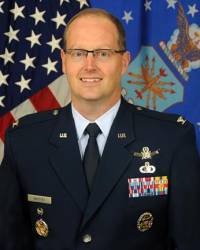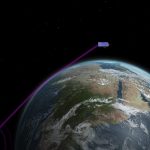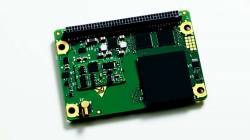 Col. Steven Whitney, the director of the GPS Directorate. Air Force photo.
Col. Steven Whitney, the director of the GPS Directorate. Air Force photo.Though lawmakers have made clear their interest in having U.S. military receivers incorporate European navigation signals, an agreement to use the encrypted Galileo signal remains elusive and the normal military requirements process could substantially delay implementation.
Though lawmakers have made clear their interest in having U.S. military receivers incorporate European navigation signals, an agreement to use the encrypted Galileo signal remains elusive and the normal military requirements process could substantially delay implementation.
The issue has taken on new energy now that House and Senate conferees have hammered out their differences and the National Defense Authorization Act (NDAA) is expected to become law. The bill (HR 2810) has an attached report with some 2,400 pages of detailed instructions including a directive for the Department of Defense (DoD) to develop a plan to use Galileo’s Public Regulated Service (PRS) as a way to improve resilience.
The problem is that no agreement has been reached to give the Americans access after some four and a half years of negotiating.
“PRS access negotiations are underway though I really can’t comment any more than that,” said Jeffrey Auerbach, GNSS advisor with the State Department’s Office of Space and Advanced Technology. Auerbach briefed the November 15 meeting of the National Space-Based Positioning, Navigation, and Timing (PNT) Advisory Board in Redondo Beach, California.
The ongoing delay could be the result of foot dragging by the Federal Communications Commission (FCC), which has been holding onto a European request for a waiver that allows use of the Galileo signals in the U.S. for official purposes like the E-911 service and law enforcement.
"You cannot imagine that we are negotiating allowing the United States to use our more precise system of Galileo [PRS] without having reciprocity to use those signals here in the United States," Jaime Silva, an advisor to the Commission, told Inside GNSS at the end of 2015.
Once a deal does get approved work can begin quickly to incorporate PRS, but the overall process has a number of lengthy, built-in steps.
“Adding PRS to military receivers is something we’ve long anticipated,” said Col. Steven Whitney, the director of the GPS Directorate. “It’s the beginning of this era of multi-GNSS, and the development of receivers offers the opportunity to improve resiliency by taking advantage of these satellites.”
“The challenge,” he said, “is to figure out what your requirements are.”
The Directorate is well into the development and testing of new M-code receivers for Increment 1 of the Military GPS User Equipment (MGUE) program. The work on Increment 2, however, is still at an early stage and able to absorb adding PRS.
“We’re currently engaged in the Increment 2 requirements process and so some of that will be adjusted based on the sense of Congress,” Whitney said.
However, the Joint Requirements Oversight Council (JROC), must still set the requirements.
“So, I’ve got to get requirements and then I’ve got to get resources, and at the same time when I go after resources I’ve got to develop a strategy of how I’m going to go after that,” Whitney explained. For example, he said, the Directorate could decide to modify an existing commercial product — or determine it needed to build something entirely new. “And that’s the discussion we’re going to be involved in once we have requirements set done.”
Incorporating PRS could potentially require some hardware changes or at least some retuning of the RF (radio frequency) front end, he said. “Additionally, you have signal structures that would have to be adjusted so you have to design receivers to be able to account for how the different signals are structured.” Dollars are not now set aside to do this, he said.
Then there is the issue of monitoring any new signals.
The possibility of monitoring non-U.S. signals has been brought up before both from the perspective of safely using other signals and for the purposes of situational awareness.
“Officially,” said Whitney, “we have no requirement to monitor other GNSS signals. I do understand the potential benefits of doing this, however. The department is still working through a determination of which signals it feels it should monitor, or would be to best monitor, and the Directorate is actively engaged in those discussions with the department.”
As part of this, he said, there have been meetings with the International Committee on GNSS, the ICG, which is investing in the concept of civil, multi constellation monitoring, which would be done independently of any one provider. “If you’re going to go into multi-GNSS,” said Whitney, “how do you know that you can trust what you’re seeing. And that’s really what the monitoring question is about — how do you trust. And there are multiple ways to get at trust.”
Whitney said that if the DoD was going to shift to multi-GNSS receivers then monitoring was essential.
“At the end of the day," he said, “the department’s asking its warriors, its soldiers, sailors, airmen and Marines to step in harm’s way based on the data they’re seeing. We have to make sure that’s trusted data.”





